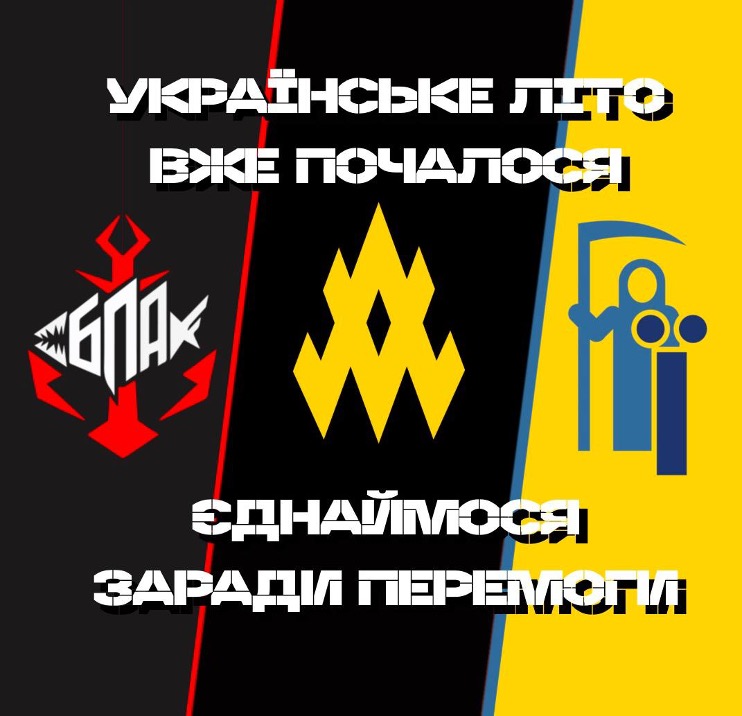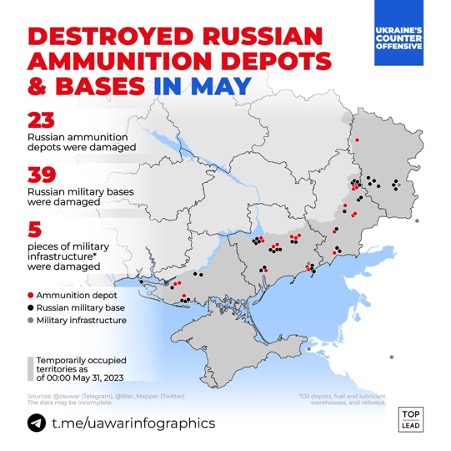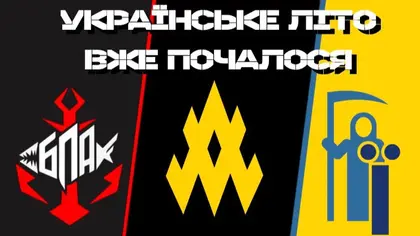Ukrainian partisan forces, who have been operating independently in the occupied areas of Crimea and southern Ukraine, announced new plans to coordinate their actions in support of the war against Russia on Monday June 12.
The Telegram account of ATESH, a group that has taken responsibility for a number of partisan actions in occupied Crimea, including the bombing of Russian military assets and attacks on Russian-appointed administration authorities, announced that the three partisan groups, ATESH, the Berdyansk Partisan Army (BPA) and Mariupol Resistance will “begin an active phase of cooperation to achieve a common goal… the liberation of Ukraine.”
JOIN US ON TELEGRAM
Follow our coverage of the war on the @Kyivpost_official.

“We understand that only by uniting can we achieve success,” a joint statement released by the groups said.
“We will concentrate the efforts of partisan movements to exterminate the invaders and search for collaborators,” it continued.
“You will witness the fruits of our cooperation. We do not unite in a new movement, but we will work together to more effectively destroy the rashists and punish the traitors.
“The Ukrainian summer has begun, and by its end we must liberate Mariupol, Berdyansk, Crimea and all our territories. We will liberate Ukraine, no matter what it costs us.
“It is the last ‘day of Russia’ for rashists,” the statement concluded with a reference to Russia Day.

EU Transfers €1.5 Bln Raised From Russian Assets for Ukraine
Little is known about the structure, size or scope of the three named groups, and Ukrainian authorities are tight-lipped about them.
However, reports of partisan activity in occupied Crimea and southern Ukraine are a matter of public record. This includes the contribution by partisans to “shaping operations” in advance of more conventional assaults by regular Ukrainian military forces.
Their “menu of operations” has included confirmed bombing, arson and sabotage attacks against energy pipelines, refineries, storage facilities, railway lines and hubs, and action against Russian troop concentrations in barracks, military-industrial complex sites, and ammo dumps. This activity may have been directed by or undertaken in concert with Ukrainian special forces.
Other shaping activity has taken the form of long-range strikes by Ukrainian air-delivered weaponry, including the UK Storm Shadow and other missiles provided by allies, possibly with target identification data having been previously provided by the partisans.

Another significant part of the partisan activity has been the assassination of individuals participating in Russian administrations of occupied Ukrainian territories.
Since the beginning of the full-scale invasion, it is reported that some 80 individuals, deemed collaborators, have been killed or wounded by partisan forces using car bombings with IEDs (improvised explosive devices), by small arms fire or otherwise.
More from the scene in Berdyansk. pic.twitter.com/hnL6FZzjNQ
— NOELREPORTS 🇪🇺 🇺🇦 (@NOELreports) June 8, 2023
Partisans in occupied territory have also been involved in psy-ops work including information distribution, digital campaigning, graffiti and related efforts, as well the gathering and passing of intelligence to Ukrainian authorities.
As Ukrainian forces advanced to liberate Kherson, resistance fighters carried out preliminary attacks and provided reconnaissance for regular military units.
One group posted photos of Russian soldiers on its Telegram channel with the tagline “we’re watching you.” The group also hung a banner that boldly declared, “If the HIMARS can’t reach you, a partisan will.”
“Partisans generally don’t win wars, but they have the capacity to wreak havoc on logistics and infrastructure behind the lines,” Ukraine expert Alexander J. Motyl has said.
“When coordinated with the actions of the regular armed forces, partisans can be both tactically and strategically important,” Motyl, a professor of political science at Rutgers University-Newark, told Al Jazeera.
“Their primary strength is that they are locals who enjoy the support of the local population. They are difficult to destroy. As a result, occupying forces generally attack the local population in order to weaken its support of the guerrillas.
The Ukrainian government has openly facilitated partisan activity not only with firearms, but platforms like Telegram channels and websites to encourage and instruct partisans.
The Ukrainian National Resistance Center has a selection of guides on topics such as how to operate drones, how to confiscate enemy tanks, and how to create improvised weapons such as Molotov cocktails.
The National Resistance Center was legislatively created by Ukraine to give its Special Operations Forces the power and role of: training, coordinating and scaling movements against the occupation of Ukraine: teaching nonviolent resistance; helping partisans; collecting information about the enemy; establishing communication between the underground, and; informing the population of Ukraine about events in the temporarily occupied territories.
You can also highlight the text and press Ctrl + Enter






